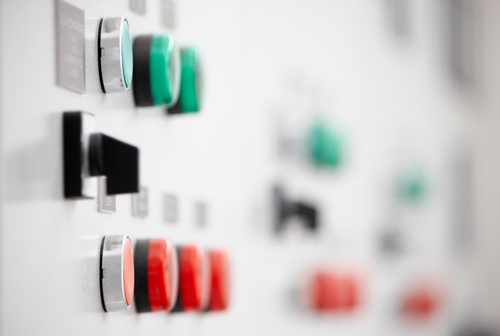
Control cabinets – what are they, what are they used for and what are their types?
Control cabinets have become an integral part of power engineering and automation systems. It is commonly used to monitor the work of equipment, plants and their components. Particular attention should be paid to structures equipped with durable metal housings, intended for professional industrial applications. What are control cabinets, what functionality do they have and what are their types?
What is a control cabinet?
A control cabinet is a form of a housing for control, distribution and protection equipment. It protects the insides from external factors and tampering, and at the same time it facilitates the access to devices and plants for authorised personnel. Control cabinets primarily allow comprehensive switching on and off of devices and their systems as well as adjustment of their frequency and workload. The architecture of a control cabinet consists of typical or custom devices, modules and components that properly connected and configured improve the functioning of the entire facility. Apparatus forming the inside of a control cabinet allows to manage devices of virtually any type – from the largest industrial machinery to small fans.
Use of control cabinets
Control cabinets are primarily responsible for controlling, adjustment, measurements and monitoring of the operation of machinery and systems. Thereby, they allow to arrange differentiated and often very complicated apparatus. It consists of electrical, electronic, electromechanical or pneumatic equipment, with varying characteristics and different functions. Control cabinets are usually equipped with relevant input and output components. The operation of individual devices is considerably owing to gauges, indicators, counters, as well as visual and sound signals. Properly designed, retrofitted and installed control cabinets supply electricity to individual plants and at the same time they control their start-up.
Design of control cabinets
Standard metal housings have a single form that provides the greatest versatility. An extended equivalent to a single cabinet is a frame control cabinet. It consists of several separate parts, each of which can operate as a single housing. Combination of several modules in series allows to achieve better performance. Another type is a cubicle, intended to distribute systems. The assembly specificity of such a housing may be fairly diversified, which results in the need to optimally adapt it to environmental conditions. There are also control and power cabinets. These housings perform both the plant control and power functions.
Assembly and installation specificity
Control cabinets may have relatively different assembly specificity. Wall-mounted and standing switchgears use the most versatile solution. Both single and frame cabinets may be attached to walls using appropriate brackets. Stand-alone models are also used increasingly. They are most often installed on a stable base that significantly improves comfort for operators. The functionality of the switch cabinet is largely affected also by its size that often determines the possibility of control systems expansion. A bigger cabinet provides also the possibility of future upgrades of the plant.
Operation and navigation
In the simplest control panel housings, operating panels are not particularly complex and usually are limited to a few single buttons. The more complex the industrial systems, the more functionality control cabinets must provide. Many models are equipped with wide panels with numerous control buttons and screens that display technical parameters and key system data. Also controllers are installed inside the housings. In the case of use in large rooms, control cabinets can be fitted with signal lamps. They provide easy viewing of the status of individual devices, even from distant workstations in the production hall.
Summary
The production of control cabinets is carried out in accordance with established procedures and standards applying to their manufacturing process. A switchgear housing should be properly sealed and durable, as well as protected against corrosion, moisture or extreme temperatures. Only the choice of a product of an experienced manufacturer ensures a high level of safety, no failures and maximum performance of the purchased control cabinet.


 en
en  PL
PL  DE
DE  LT
LT  SV
SV  FR
FR  ES
ES  HU
HU  NO
NO  DK
DK  FI
FI  RU
RU 